While most people are very familiar with Norse gods like Odin and Thor (thanks, Marvel), the tales of the equally captivating goddesses of the Norse myths might not be as familiar. So in this article, we’ll explore the sagas, areas of influence, and powers of these fascinating deities; in short, everything you need to know about the Viking Age goddesses of Norse mythology.
Keep in mind that Norse deities seldom hold exclusive areas of influence (as an example, there are numerous “goddesses of fertility”), and that they often are associated with many different areas (Freyja is for example linked with anything from fertility, beauty, and love, to war, death, and magic).
ℹ️ All of the information in this article is based on the oldest Norse mythology sources we have access to, the Poetic Edda, the Prose Edda, and the Heimskringla. I also include various examples of beautiful art, including both older (19th-20th century) and newer (21st century) examples.
- Freya – Goddess of Love, Sex, Beauty, War & Seiðr Magic
- Frigg – The Almighty Queen of Asgard
- Skaði – Goddess of Winter, Mountains & Hunting
- Sól/Sunna – Goddess of the Sun & Daughter of Night
- Jörð – Goddess of Nature and Earth, Lover of Odin, Mother of Thor
- Sif – Goddess of Fertility and Abundance
- Iðunn – Goddess of Spring, Youth, Apples, and Renewal
- Gefjun – Goddess Of Plowing, Agriculture & Protection
- Saga – Goddess of Knowledge & Water
- Eir – Goddess of Healing & Medicine
- Sjöfn – Goddess of Sexual Desire
- Lofn – Goddess of Kindness, Love & Marriage
- Vár – Goddess of Promises, Oaths & Marriage
- Vör – Goddess of Curiosity, Wisdom & Certainty
- Syn – Goddess of Refusal, Protection & Guardian of Valhalla
- Hlín – Goddess of Protection & Surveillance
- Snotra – Goddess of Wisdom, Politeness, Refinement & Respectability
- Hel – Goddess of Death and Ruler of the Damned in the Underworld
- Sigyn – Goddess of Devotion and Wife of Loki
- Fulla – Goddess of Fates and Sister of Frigg
- Gna – Goddess of Rumours and Messages
- Common Questions About the Norse Goddesses
Freya – Goddess of Love, Sex, Beauty, War & Seiðr Magic
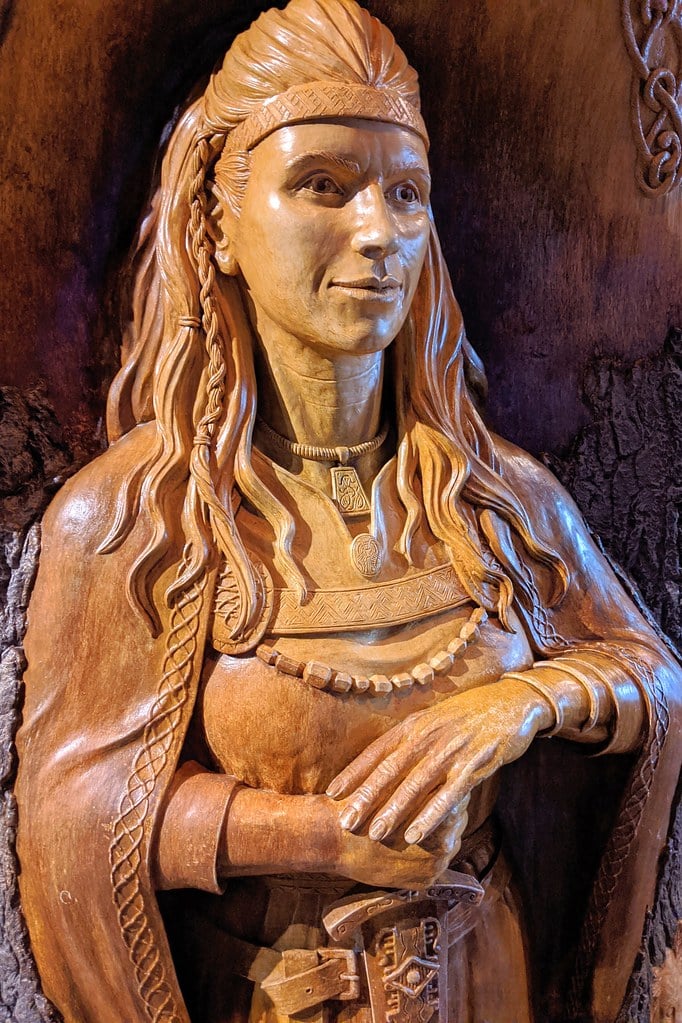
Freyja, alternatively spelled as Freya or Freja, literally means “the Lady” in Old Norse, and is likely the most known and prominent goddess in Norse mythology, and she is commonly associated with numerous areas of influence, including love, fertility, beauty, sex, war, and seiðr magic.
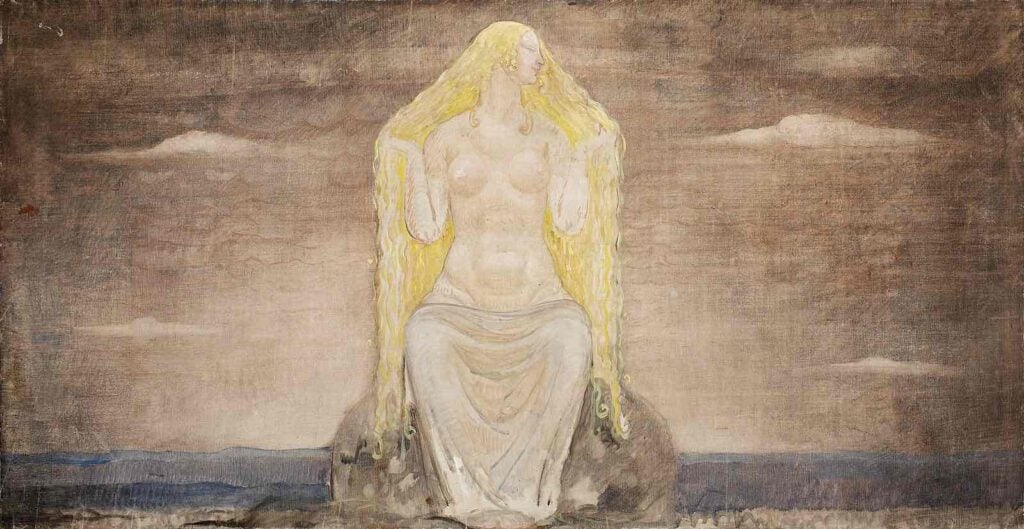
She is the only female Vænir deity named in the sagas, and is considered to be a pre-eminent goddess, renowned for her beauty, charm, and sensuality.
The sixth is Freyja, who is ranked with Frigg. She is wedded to the man whose name is Odin; their daughter’s name is Hnos, and she is so fair that all things fair and precious are called, from her name, Hnos. Odin went far away. Freyja weeps for him, but her tears are red gold. Freyja has many names, and the reason therefor is that she changed her name among the various nations to which she came in search of Odin. She is called Mardol, Horn, Gefn, and Syr. She has the necklace Brising, and she is called Vanadis.
Gylfaginnig in the Prose Edda by Snorri Sturluson
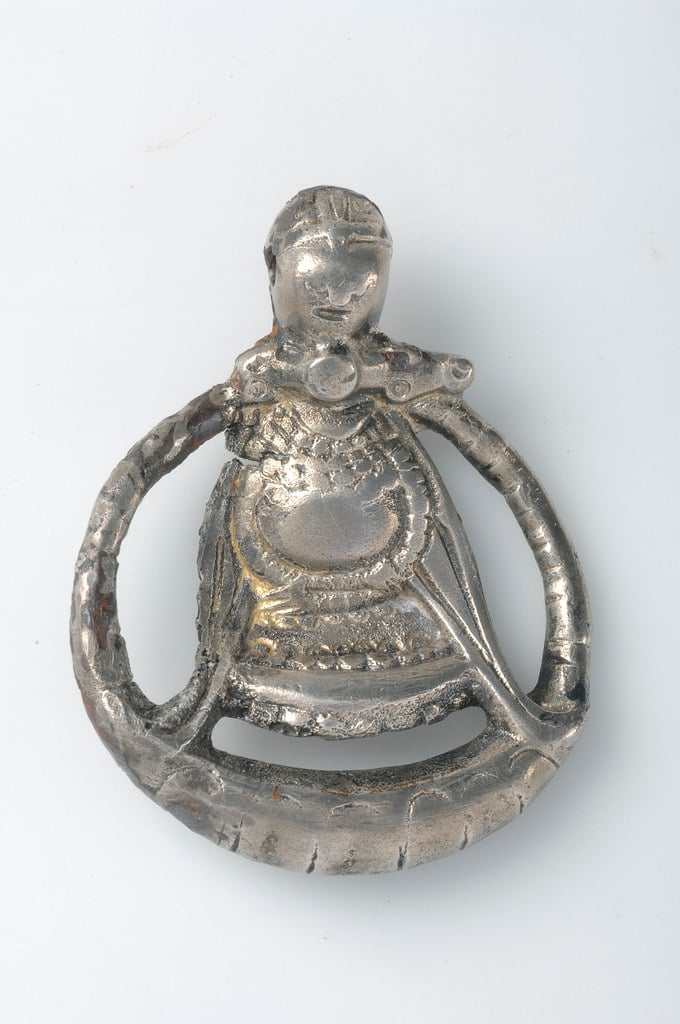
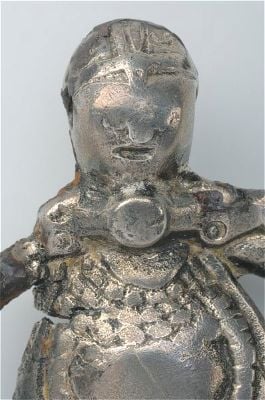
Freyja was known to practice Seiðr — a special form of magic in the age of Vikings — and was an expert in gold-working. She was also depicted as a powerful warrior who could bring both victories in battle as well as blessings in love affairs.
Folkvang is called,
Gylfaginnig in the Poetic Edda
Der Freya rules
About seats in the hall.
The half of the battle she chooses
On each day,
But half Odin owns.
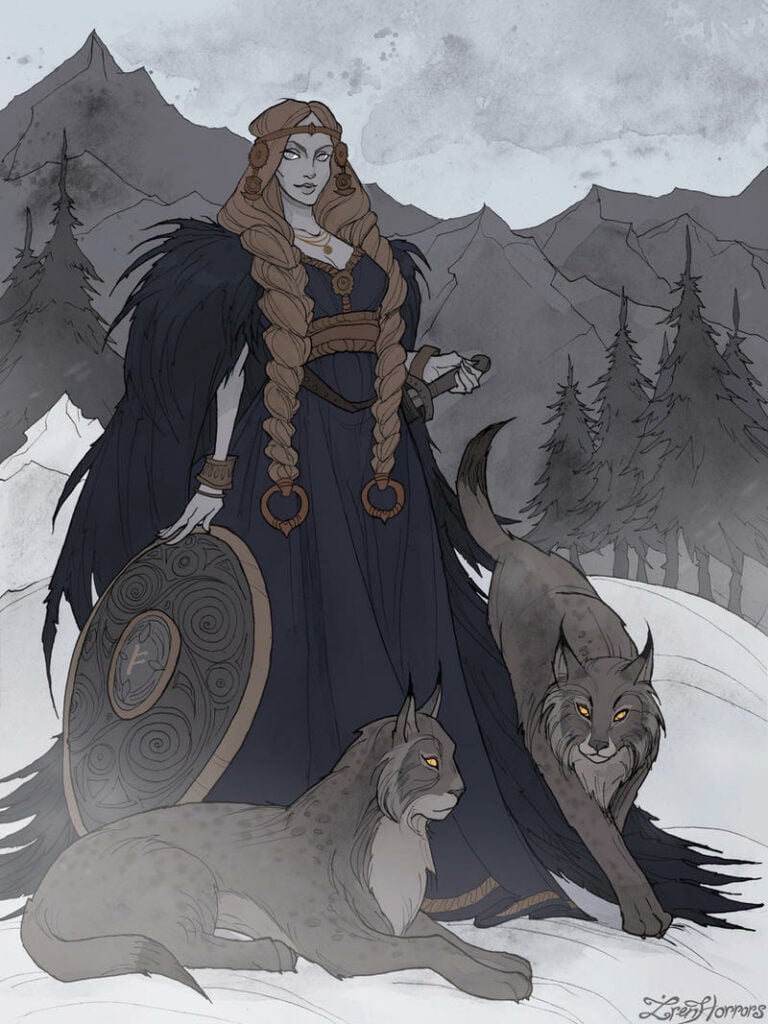
And to top of her long list of accomplishments, she was also said to have had the power to resurrect fallen warriors from the dead.
Frigg – The Almighty Queen of Asgard
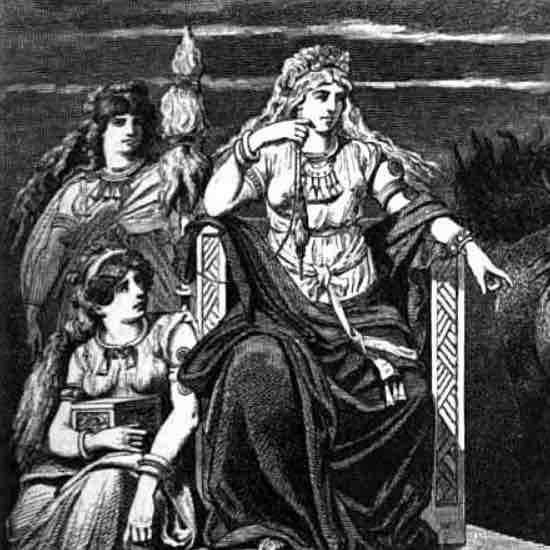
Frigg was the Queen of Asgard, wife of Odin, and the noblest of the goddesses in Norse mythology. She is married to Odin, her father is Fjorgynn, and her home is called Fensalir (“hall of the marshlands”).
Here is how she is described in Gylfaginnig, where the Asynjúr are listed:
Frigg is the first; she possesses the right lordly dwelling which is called Fensaler.
Gylfaginnig in the Prose Edda by Snorri Sturluson
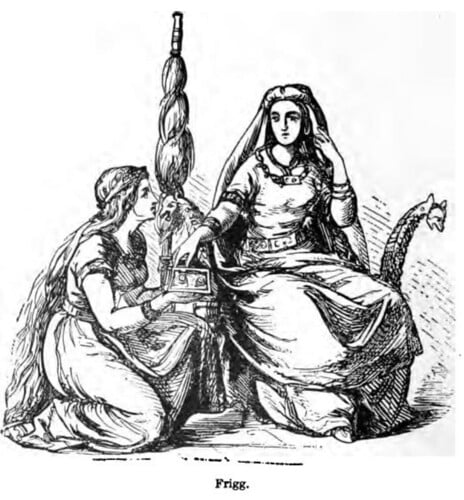
She is a promoter of marriage and motherhood, being herself the mother of Baldr, Hödor and many more. Frigg was also believed by Norse mothers to be a great protector of children in general, and they believed she would often intervene on behalf of them.
In addition to her role as a loving mother, Frigg was known for her wisdom and knowledge; with a keen understanding of fate that helped her see into both pasts and futures.
Frigg came to be known as “The Beloved” in Old Norse; her presence brought joy to all who knew her, inspiring strength in those who were weak, hope in those who were lost, and love in those who needed it most.
Skaði – Goddess of Winter, Mountains & Hunting
Skaði is a Norse Jötunn (giant) associated with winter, snow, hunting, skiing, and mountains according to the sagas. She is described as strong-willed, beautiful, vengeful, and ruthless; having both charmed and poisoned other gods.
According to Old Norse belief, she brought about winter each year.
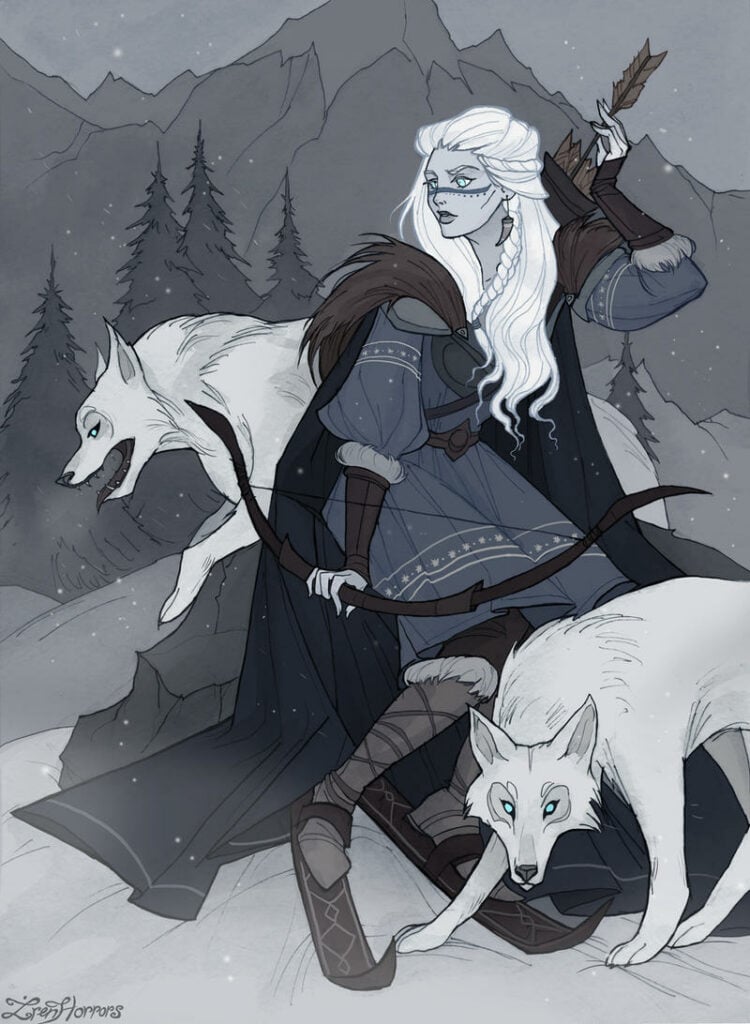
Odin described her as “the shining bride of the gods”, and chose her as his wife after she had split up with her first husband Njörðr. And to top it all off, she is credited with poisoning the ever-scheming bad guy of Norse mythology; Loki.
Read more about Skaði in the in-depth article below:
Sól/Sunna – Goddess of the Sun & Daughter of Night
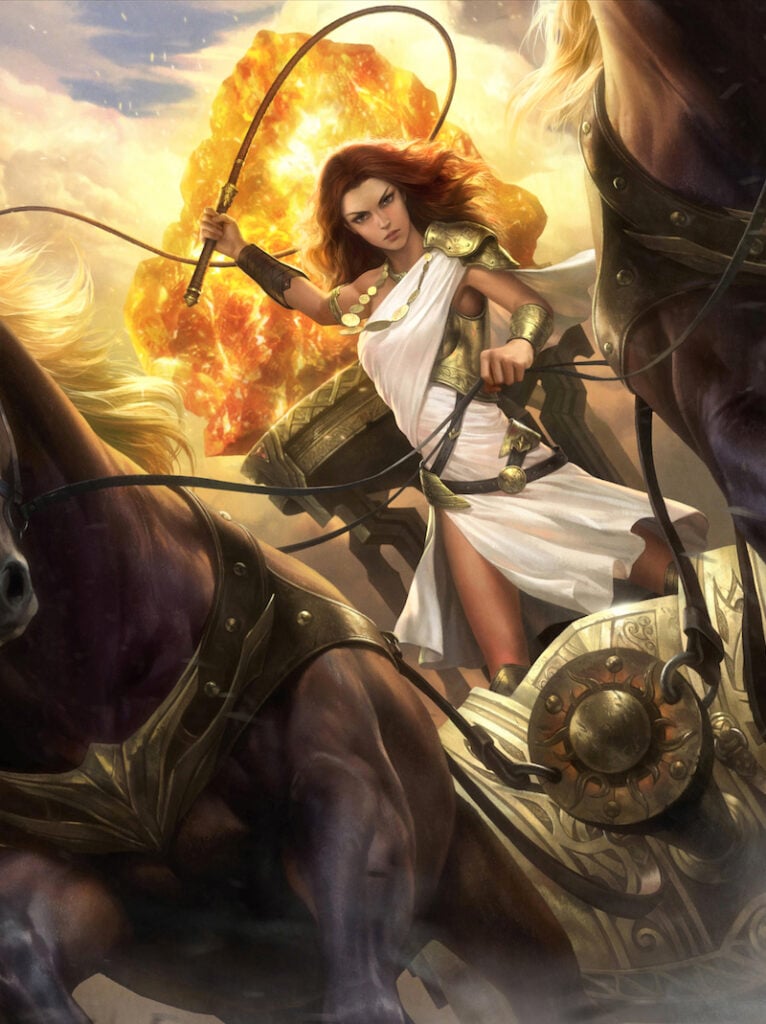
Sól was the Norse Goddess of the Sun, and was also known as Sunna. In Norse mythology, the sun is believed to be female, while the moon is male — and both Sol and Mani (i.e. the moon) were worshipped as deities of protection and victory.
The Old High German Merseburg Incantations, written in the 9th or 10th century, revealed that Sol was honored not just a goddess of the sun but also of protection and victory.
Phol and Wodan were riding to the woods, and the foot of Balder's foal was sprained So Sinthgunt, Sunna's sister, conjured it; and Frija, Volla's sister, conjured it; and Wodan conjured it, as well he could: Like bone-sprain, so blood-sprain, so joint-sprain: Bone to bone, blood to blood, joints to joints, so may they be glued.
–Second Merseburg Charm
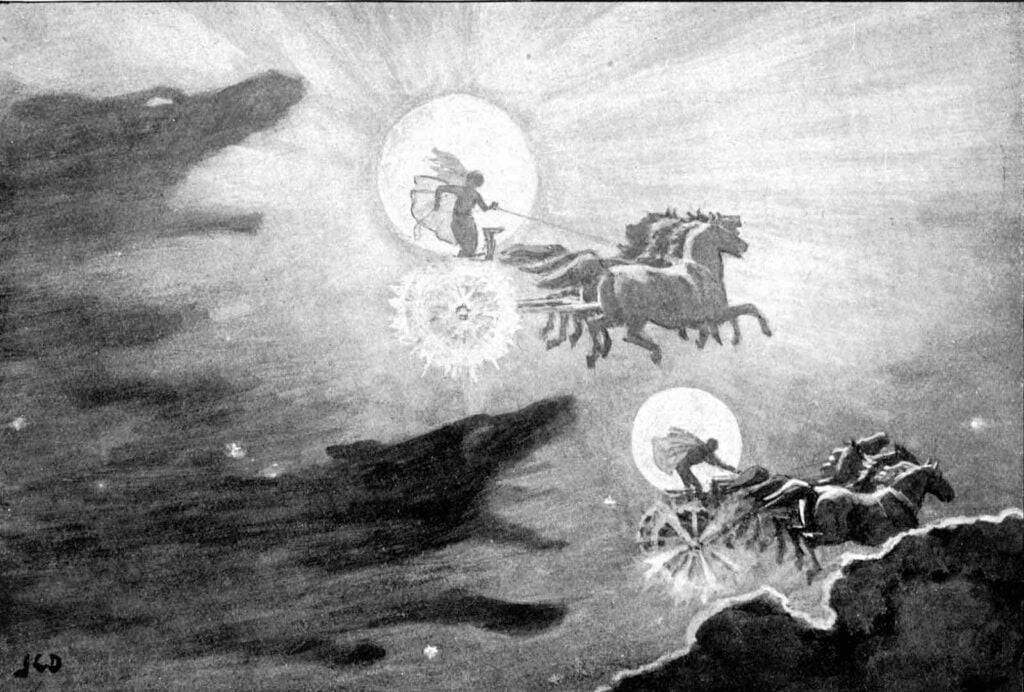
It was believed that she drove across the sky each day in the chariot of the sun, called Alfrödull and created to light up the worlds, with her horses Arvaker and Allsvinn. She was chased by Mani’s wolves Skoll and Hati, who were intent on devouring her.
Sól was also known by names such as Sun-Bright, Everglow, and Fair Wheel, and she may be the mysterious maiden Odin seduces in Hávamál 96-102:
Billing girl I found on the bed, sun-bright, all asleep; a nobleman's joys were as nothing to me unless I could be with that body.
Jörð – Goddess of Nature and Earth, Lover of Odin, Mother of Thor

Jörð, also called Fjørgyn and Hlodyn, was in Norse mythology seen as the goddess of nature and earth and often depicted as a beautiful woman with long hair and a gentle face. She is the daughter of Annar and Nótt, two giants (Jötunns) who were married to each other.
How shall earth be referred to? By calling it Ymir’s flesh and mother of Thor, daughter of Onar, bride of Odin, rival of Frigg and Rind and Gunnlod, mother-in-law of Sif, floor and base of winds’ hall, sea of the animals, daughter of Night, sister of Aud and Day
Skáldskaparmál, Prose Edda, Snorri Sturluson
Jörð was one of many lovers of Odin the all-father, and the mother of Thor, the thunder god. Thus, she is often seen as a symbol of fertility and abundance and is associated with the land and earth itself (jord literally means “earth” in modern Swedish).

As she was seen as earth itself, she was believed to be responsible for providing food for all living creatures, and in addition to being a symbol of fertility and abundance, Jörð was also seen as a protector of nature and its inhabitants.
Sif – Goddess of Fertility and Abundance
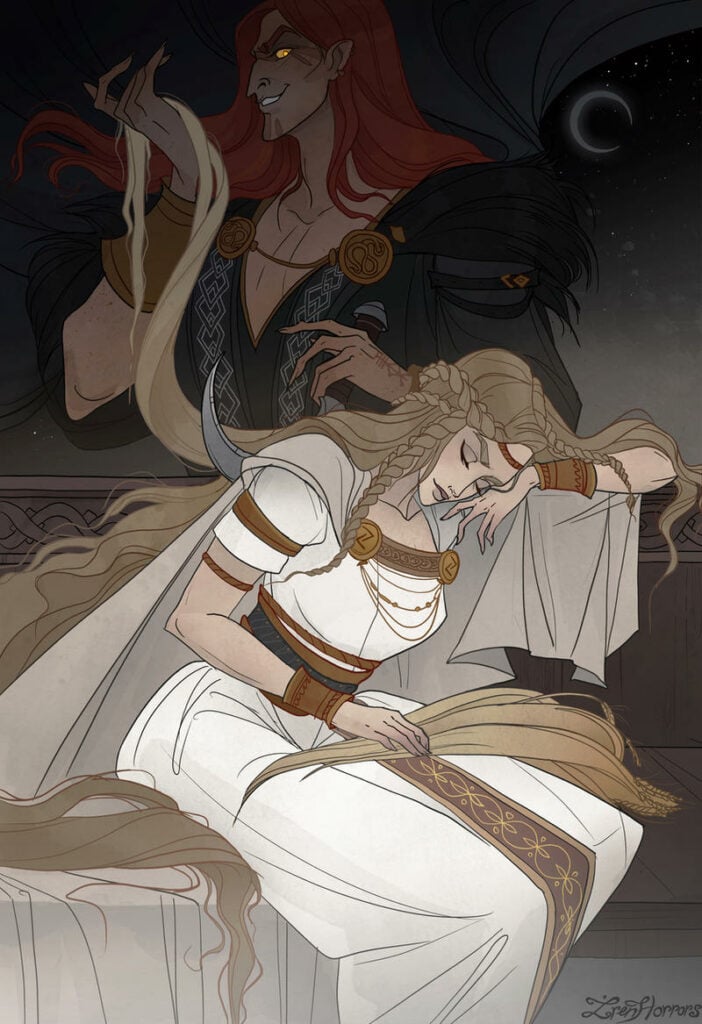
Sif was perhaps best known as the wife of the thunder god Thor and mother of Ullr, god of archery, skiing and single combat — but, she was also an important fertility goddess, associated with the Earth’s abundance and nourishment.
Her story is intertwined with that of the ever-mischievous trickster Loki, who once cut off her golden locks and was forced to replace them with new ones made from gold. Sif’s role in Norse mythology emphasizes her importance as a symbol of fertility and abundance, which is represented through her golden hair.
Sif’s powers over crops are celebrated in countless stories throughout Northern Europe, and as a fertility goddess, she was also associated with wedlock and family life.
If you’d like to learn more about Sif’s slightly more famous husband Thor, I’ve written an article that explains what we know about the god of thunder, his personality, exploits, archeological finds, modern art interpretations, and his role in pop culture.
Iðunn – Goddess of Spring, Youth, Apples, and Renewal

Iðunn, also spelled as Idunn, Idun or Iduna, was the goddess of youth, rejuvenation and renewal in Norse mythology. She was the wife of Bragi, the god of poetry, and was revered for her wisdom, eloquence and knowledge of poetry.
She was also known as the keeper of the magical apples of immortality which were essential for preserving the gods’ and goddesses’ youth. Iðunn’s name means “forever young” in Old Norse, and she is often depicted carrying a box made from ash wood—a tree that holds special significance in Norse mythology with Yggdrasil, the tree of life, being one—which is filled with her magical apples.

Iðunn is seen as one of the most important goddesses in Norse mythology as she represents eternal youth and fertility for deities and humans alike.
Gefjun – Goddess Of Plowing, Agriculture & Protection
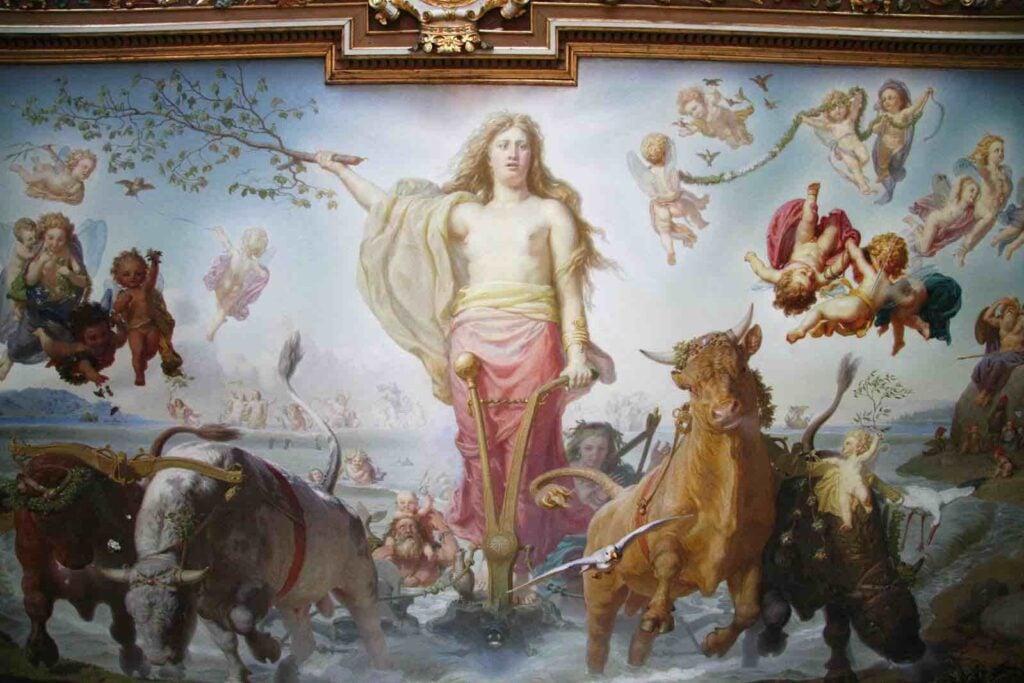
Gefjun was a Norse goddess associated with agriculture, fertility, abundance, and prosperity. Her name is derived from the Old Norse verb gefa which translates to “give” or “generous” (ge/giva in modern Swedish).
She was associated with the plow and often depicted with a group of oxen driven by her, and known as a shape-shifter that could create land from her plowing.
According to legend she split the island of Sjælland from Sweden (called Svitjod in Viking times), and thus created the means for the Danish kingdom:
King Gylfe ruled the lands now called Svitjod. It is said of him that he gave a wandering woman a ploughland as thanks for the pleasure she had given him. It was supposed to be so big that four oxen could plough it in a day and a night. But the woman was of the line of the Aesir. Her name was Gefjon. She brought four oxen from Jotunheimen in the north, they were sons of hers and a giant, and put them to a plough. And the plough took it so hard and so deep that the land was cut loose, and the oxen drew the land westward into the sea, and stood in a sound. There Gefjon set the land and named it Sjælland.
Prose Edda, Snorri Strulorson
After this feat, Odin allegedly rewarded Geifjon with his son Skjold, after which the two settled down in Lejre on Sjælland, where they established the beginnings of the first Danish dynasty of kings.
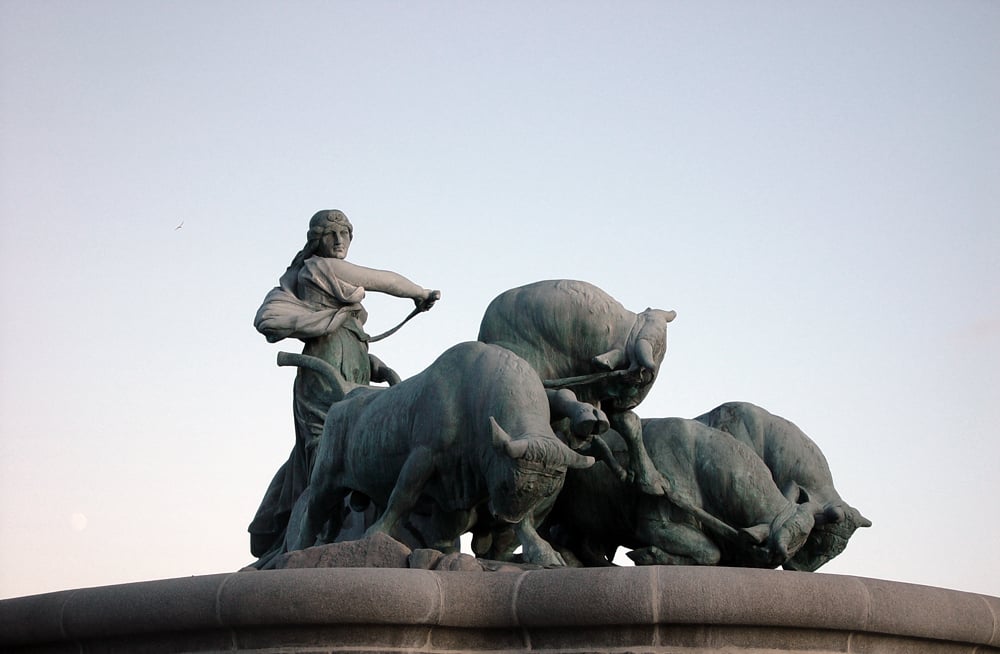
Gefjon was venerated as a provider of fertility and prosperity for crops and livestock. She was believed to be generous yet stern when punishing those who wronged her or broke their vows. Women in particular revered her for her protection of female independence and virginity.
The fourth is Gefjon, who is a maiden, and those who die maids become her hand-maidens.
Gylfaginnig in the Prose Edda by Snorri Sturluson
Her worshipers would often make offerings at temples dedicated to Gefjon for blessings on their crops, families, or businesses.
Saga – Goddess of Knowledge & Water
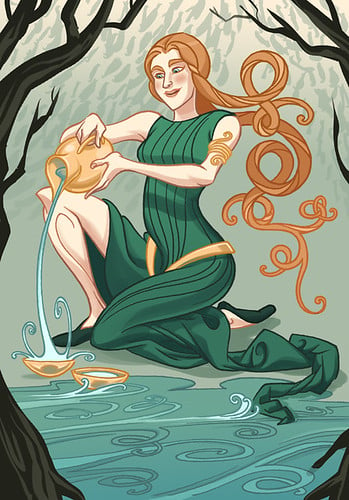
Saga is a Norse goddess of knowledge, divination and water, and is said to spend her time with Odin in her home, Sökkvabekkr, where they drink joyfully.
Sökkvabekk is the fourth, where cool waves flow,And amid their murmur it stands;There daily do Othin and Saga drinkIn gladness from cups of gold
Gylfaginnig in the Prose Edda by Snorri Sturluson
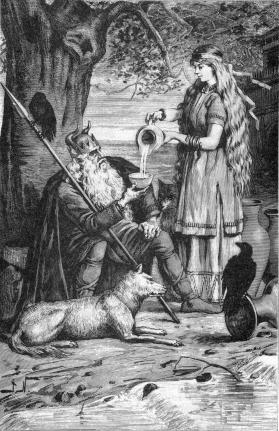
The story of Saga’s origin dates back to when Odin, the one-eyed god of the Norse deities, sacrificed his eye in exchange for knowledge from Mímir. As a reward for his courage, Mímir gave Odin two sacred objects – a magical mead called Odroerir and an unnamed precious stone.
Odin plucked out his own eye in return for this gift and offered it up to Mímir as payment for his newfound wisdom. In gratitude for Odin’s sacrifice, Mímir gave him Saga as a companion – an attendant of Frigg who would help him gain further knowledge through her prophetic powers.
The second is Sága, who dwells in Sökkvabekkr, and this is a large dwelling.
Gylfaginnig in the Prose Edda by Snorri Sturluson
Eir – Goddess of Healing & Medicine
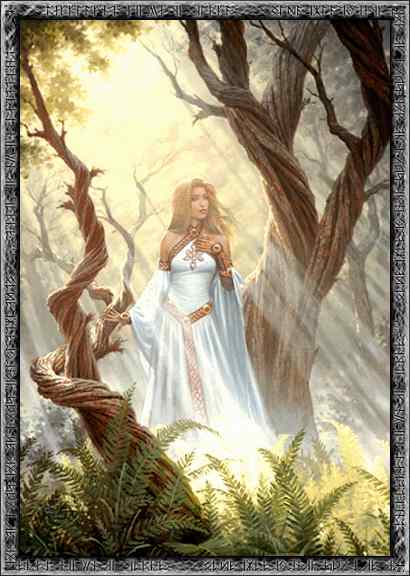
Eir is a mysterious figure in Norse mythology, known as the Goddess of Healing. She is associated with medical skill and is one of the handmaidens of Frigg.
The third is Eir: who is the best healer.
Gylfaginnig in the Prose Edda by Snorri Sturluson
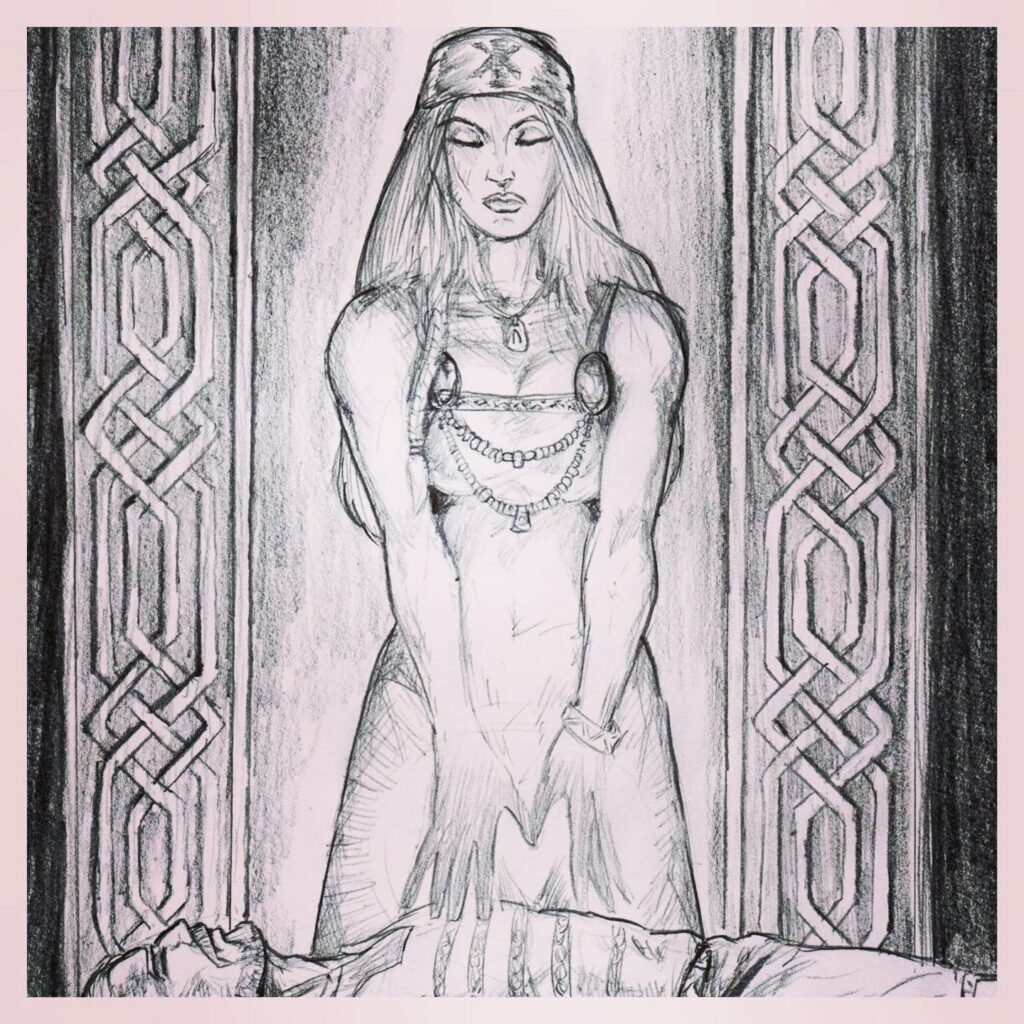
Eir’s name translates to mean “help, mercy, clemency” and she became a patron deity for all Norse healers.
Her hill of healing Lyfjaberg was said to be where she used her magic powers to heal the sick and wounded.
Sjöfn – Goddess of Sexual Desire
The Norse were no strangers of love and passion, so its no surprise that there are more than a few goddesses associated with the heart’s desires. One of them is Sjöfn, who was associated with love and sexual desire, and known as the goddess of passion and marital harmony, encouraging relationships to be strong and full of love.
The seventh is Sjöfn, who is fond of turning men’s and women’s hearts to love, and it is from her name that love is called Sjafne.
Gylfaginnig in the Prose Edda by Snorri Sturluson
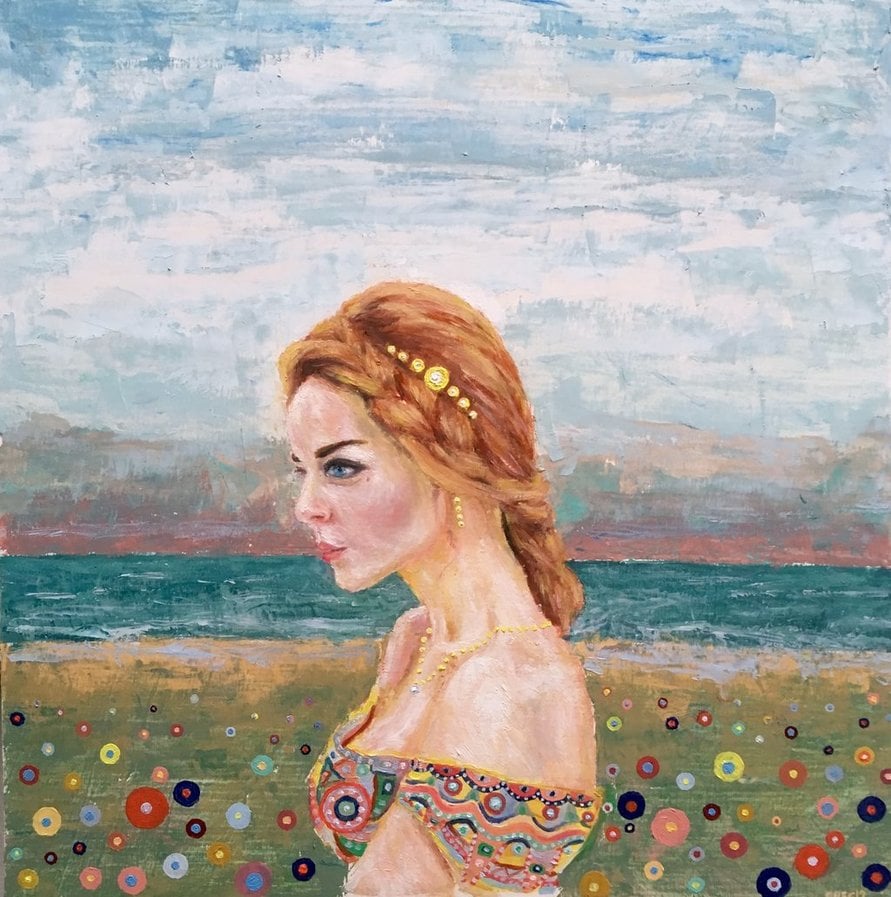
According to myth, Sjöfn was able to stir up strong emotions in people, leading them to act on their desires with abandon. Her symbolism is often found in artworks that depict her as a beautiful woman surrounded by passionate flames or animals, representing the heat of passion.
In addition to being a goddess of passion and desire, she also had associations with friendship and loyalty.
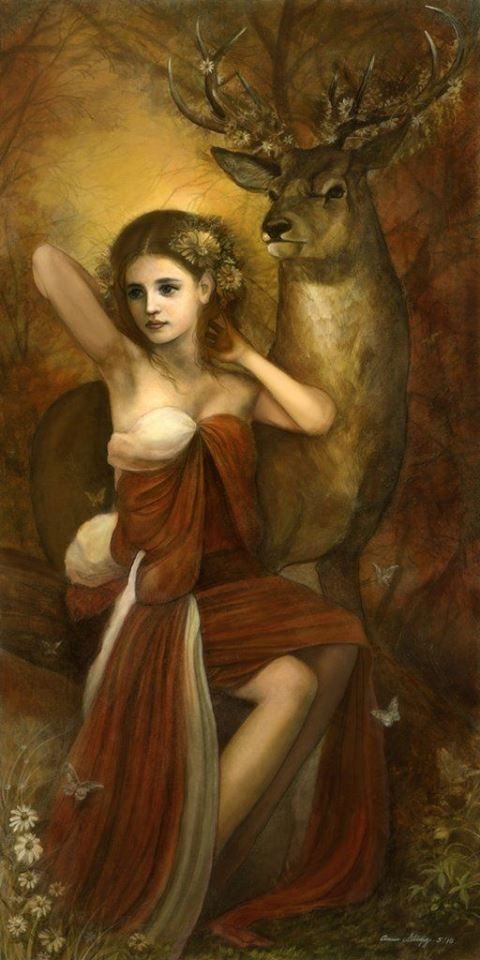
She was believed to be the protector of those whose voices were silenced for their views or for being too young or too old. Sjöfn’s influence could also be seen in matters relating to fertility and family life.
Lofn – Goddess of Kindness, Love & Marriage
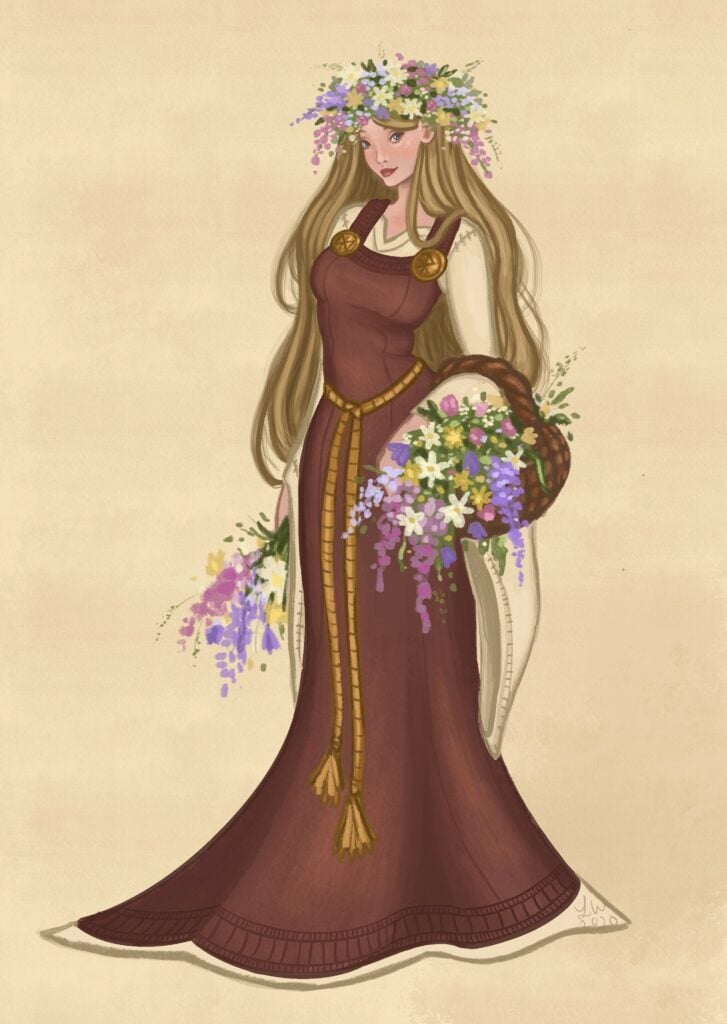
Lofn is perhaps the foremost Norse goddess of love, as she has given name to the word itself (Lofn = Love). She is known for her kindness and willingness to bless even marriages facing obstacles of some kind, and is sometimes referred to as the “Goddess of Forbidden Love” because of her willingness to go against societal norms.
She also has associations with wrath, as she does not take kindly to those who would deny love or stand in the way of true love.
The eighth is Lofn, who is kind and good to those who call upon her, and she has permission from Allfather or Frigg to bring together men and women, no matter what difficulties may stand in the way; therefore “love” is so called from her name, and also that which is much loved by men.
Gylfaginnig in the Prose Edda by Snorri Sturluson
Her worshipers typically prayed to her for help with matters of the heart and relationships, often seeking intercession on behalf of those they care about.
Vár – Goddess of Promises, Oaths & Marriage
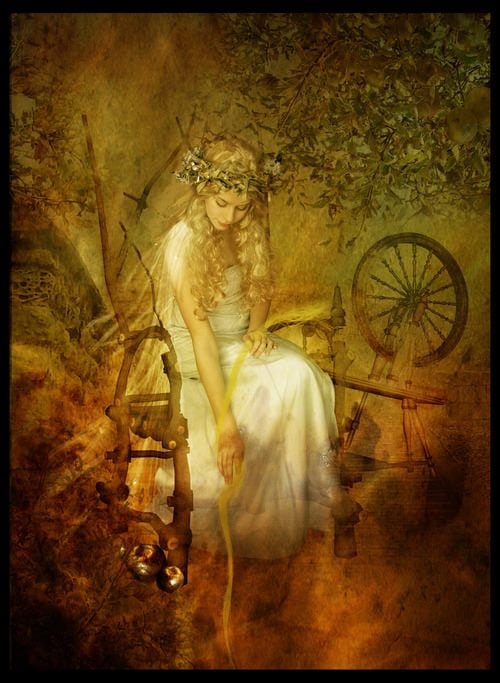
Vár is a Norse goddess associated with promises, oaths, and marriages that are built on such. She is the keeper of oaths, ensuring that people keep their word and delivering vengeance upon those who violate them.
The ninth is Var. She hears the oaths and troths that men and women plight to each other. Hence such vows are called vars, and she takes vengeance on those who break their promises.
Gylfaginnig in the Prose Edda by Snorri Sturluson
Vár is one of the Ásynjur (goddesses) of Asgard, born from two powerful deities. Her name translates as ‘vow’ or ‘promise’ and she listens to agreements made between people, writing them down so that they are kept safe.
As well as being a goddess of marital vows, she is also believed to be associated with paths chosen freely and the consequences they bring.
Vör – Goddess of Curiosity, Wisdom & Certainty

Vör is a Norse goddess known for her wisdom, curiosity and certainty, and is said to have a searching spirit and an ability to influence human affairs. Her name translates to “careful” or “watchful” in Old Norse, suggesting that she uses her wisdom to protect her followers from harm.
The tenth is Vör, who is so wise and searching that nothing can be concealed from her. It is a saying that a woman becomes vor (ware) of what she becomes wise.
Gylfaginnig in the Prose Edda by Snorri Sturluson
Vör’s domain lies in knowledge and understanding, making her an invaluable resource for those who seek insight into life’s mysteries.
She encourages people to explore the unknown, take risks and push boundaries in order to achieve greatness. Her presence was believed to be felt in moments when decisions were made based on intuition instead of logic – often leading towards the path that hearts desired most.
Vör is also associated with certainty – providing strength and courage during times of trial or difficulty.
Syn – Goddess of Refusal, Protection & Guardian of Valhalla
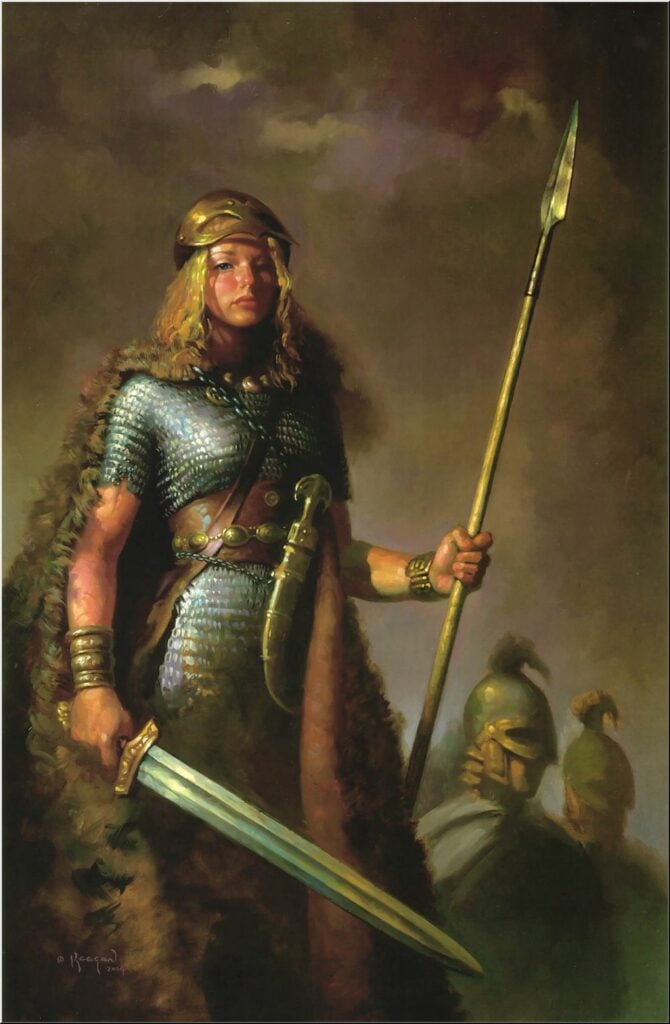
Syn is a powerful Norse Goddess of defensive refusal and protection. She is one of the Æsir and guards the doors of Frigg’s great hall, Sessrumnir. Syn has been associated with Valkyries, which are female figures who choose those who will die in battle and lead them to Odin’s hall in Valhalla.
Syn was called upon by Frigg in order to protect her son, Baldr, and she symbolizes strength, courage, and the power of refusal.
The eleventh is Syn, who guards the door of the hall, and closes it against those who are not to enter. In trials she guards those suits in which anyone tries to make use of falsehood. Hence is the saying that “syn is set against it,” when anyone tries to deny ought.
Gylfaginnig in the Prose Edda by Snorri Sturluson
Her presence at the doors of Valhalla ensures that only those who are worthy may enter the halls of the fallen.
Hlín – Goddess of Protection & Surveillance
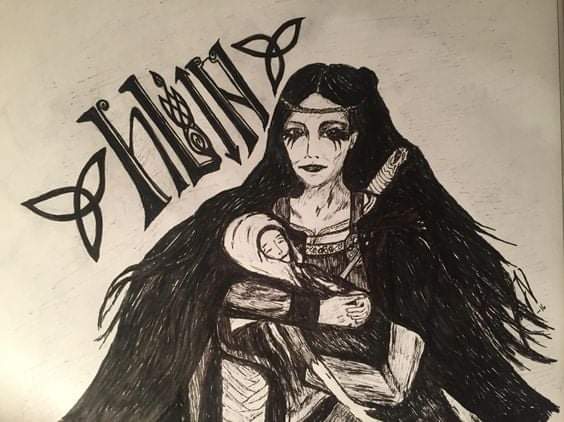
Hlin is often referred to as the goddess of protection and surveillance, and is associated with protecting individuals from harm, providing consolation and comfort in times of need, and ensuring that justice is served.
In addition to her protective role, Hlin is also associated with marriage, childbirth, and child-rearing.
The twelfth is Hlín, who guards those men whom Frigg wants to protect from any danger. Hence is the saying that he hlins who is forewarned.
Gylfaginnig in the Prose Edda by Snorri Sturluson
Hlin’s name can be translated as “protector” or “guardian”, and in some stories, Hlin was also seen as a counselor or adviser to other Aesir gods such as Odin.
Snotra – Goddess of Wisdom, Politeness, Refinement & Respectability
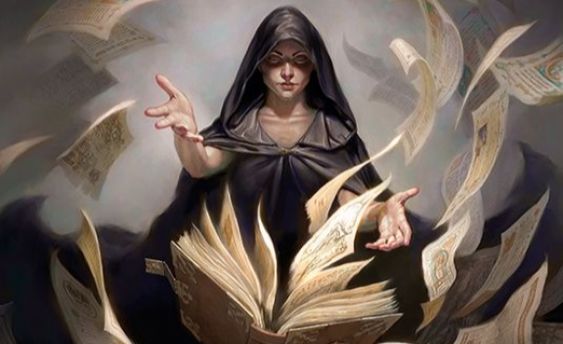
Snotra is a Norse goddess associated with wisdom, politeness, refinement and respectability. She is described in the Prose Edda as being “wise and courteous”, and is seen as a protector of knowledge and healing.
The thirteenth is Snotra, who is wise and courteous. After her, men and women who are wise are called Snotras.
Gylfaginnig in the Prose Edda by Snorri Sturluson
In the Gautreks Saga, she is described as the mother of Gautrek, who is the son of Gauti, the first ancestor of the Geats and Goths, and King of Sviþjoð (Sweden).
We don’t know much more about Snotra, but this link to the ancient Kings of Sweden ultiamtely gives her a prominent place in the Norse sagas.
Hel – Goddess of Death and Ruler of the Damned in the Underworld
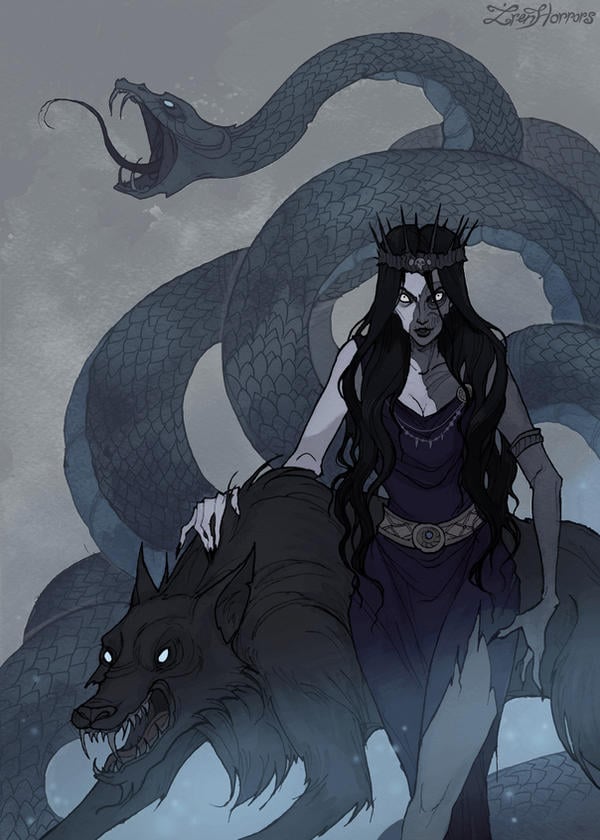
Hel is the daughter of Loki, goddess of death, and ruler of the damned in the Norse underworld.
She is described as a half-living, half-dead being with a pale complexion and a gloomy disposition, and resides in her own realm, known as Helheim, where she rules over those who have died from sickness or old age.
Hel is often depicted as having two faces – one living and one dead – to symbolize her dual nature.
As the daughter of Loki, the trickster god, and Angrboda, a giantess, and with her dark role in the mythological world of the Norse, it’s easy to assume that Hel is a dark and evil figure.
But despite all of this, Hel is not necessarily an evil figure; rather, she serves as a reminder that death is inevitable for all mortals and must be accepted with dignity. As such, she has become an important figure in Norse mythology and her complex duality continues to inspire stories and artwork today.
Sigyn – Goddess of Devotion and Wife of Loki
Sigyn is a Norse goddess often associated with devotion and loyalty, in her role as the ever-supporting wife of Loki.
She is known for her unwavering loyalty to her husband, even when he was imprisoned by the gods for his misdeeds. Sigyn would stay by Loki’s side when he was chained and subjected to the venom of a snake, catching the venom dripping from the snake above him in her bowl.
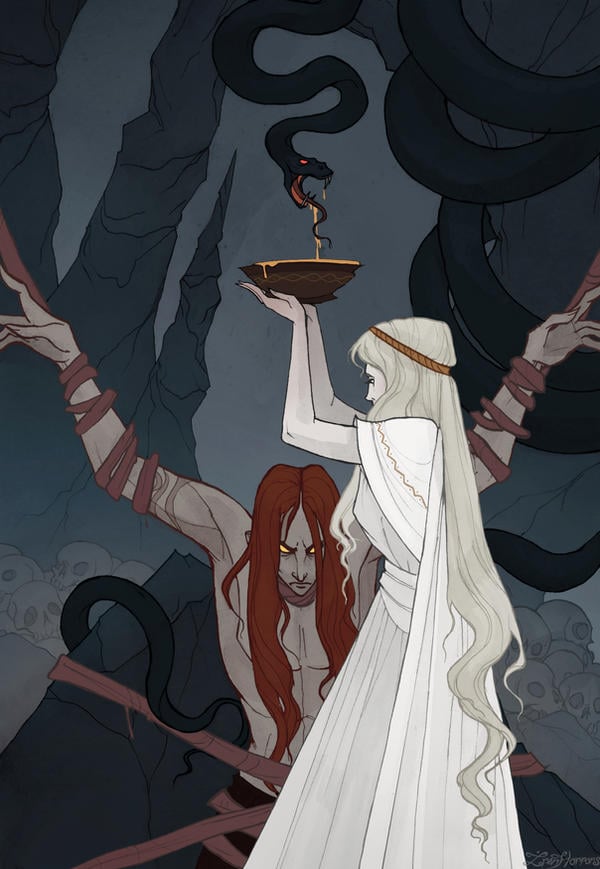
Her name translates to “victorious girl” or “victory-bringer”, which speaks to her strength and courage in standing by Loki despite his wrongdoings.
Despite her links with the two-faced trickster, or perhaps because her undying loyalty towards him, Sigyn was likely an important figure for the Norse people and was seen as representing loyalty and devotion even when faced with adversity.
Fulla – Goddess of Fates and Sister of Frigg
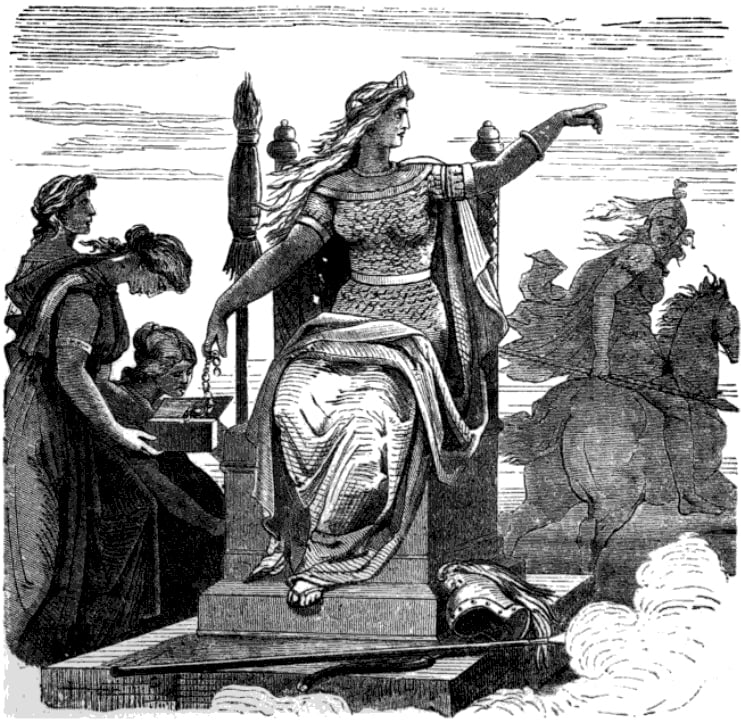
Fulla is a goddess of fate and the sister of Frigg, and is often depicted as a beautiful young woman with long golden hair, wearing a golden ribbon on her head.
She is trusted with the chest of Frigg, meaning her possesions, and as such is responsible for protecting the family’s wealth.
The fifth is Fulla, who is also a may, she wears her hair flowing and has a golden ribbon about her head; she carries Frigg’s chest, takes care of her shoes and knows her secrets.
Gylfaginnig in the Prose Edda by Snorri Sturluson
Fulla is said to be wise beyond her years and can offer advice on matters both mundane and spiritual. In some stories she is even said to have prophetic powers, being able to see into the future.
Gna – Goddess of Rumours and Messages
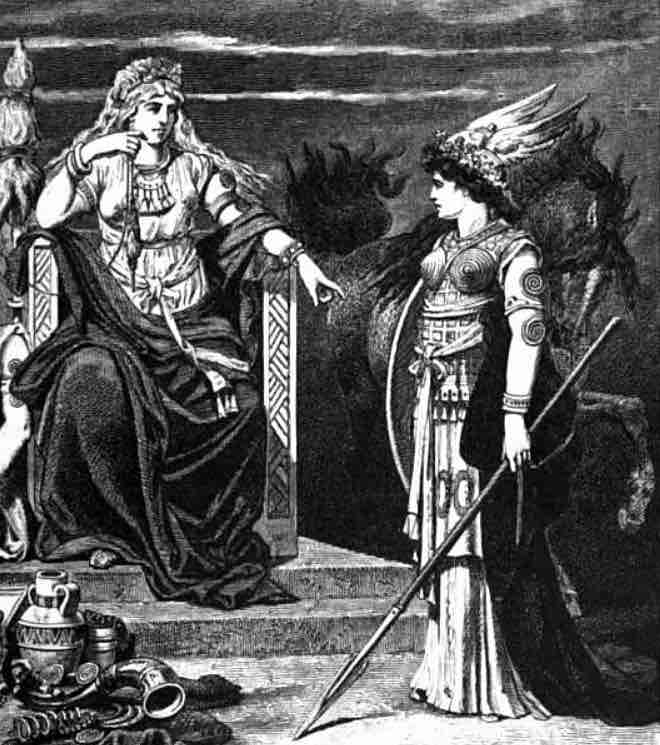
Gna is a Norse goddess associated with rumors and messages. She is the messenger of Frigg, the wife of Odin. Gna is often depicted as a beautiful woman riding on a horse or chariot pulled by two cats.
She is said to travel between the realms of Asgard, Midgard and Jotunheim, carrying news from one place to another. Gna has been described as being both helpful and mischievous; she can be both a source of information and a spreader of gossip and lies.
Her presence in Norse mythology serves as an important reminder that words have power, and that they should be spoken carefully. Gna was seen as a reminder of the consequences words can have when mispoken.
The fourteenth is Gna, whom Frigg sends on her errands into various worlds. She rides upon a horse called Hofvarpner, that runs through the air and over the sea. Once, when she was riding, some vanir saw her faring through the air. …
Gylfaginnig in the Prose Edda by Snorri Sturluson
Common Questions About the Norse Goddesses
Who is the most powerful Norse goddess?
Frigg might have had the highest status of the Norse goddesses as wife of Odin, but the most powerful Norse goddess is likely Freyja, the goddess of love, beauty and fertility, who was further associated with war, death, magic and prophecy.
So why was Freyja the most powerful Norse goddess? According to myth, Freya could foresee the future, a skill that she taught Odin the all-father. Her powers were so great, it was also said that she had the ability to bring people back from the dead if she chose to do so.
Freyja was also known for her ability to shape-shift into a falcon or cat, and could fly through the air on her cloak made of feathers. And as a bonus, she had a chariot pulled by cats (!), and rode into battle with her beloved boar Hildisvini. What’s not to love?
Who is the most beautiful Norse goddess?
The most beautiful Norse goddess is likely also Freyja, being the goddess of love, beauty, and fertility (among other things). Freyja was said to be so beautiful that she could make even the most hardened warriors weak in the knees with her mere presence.
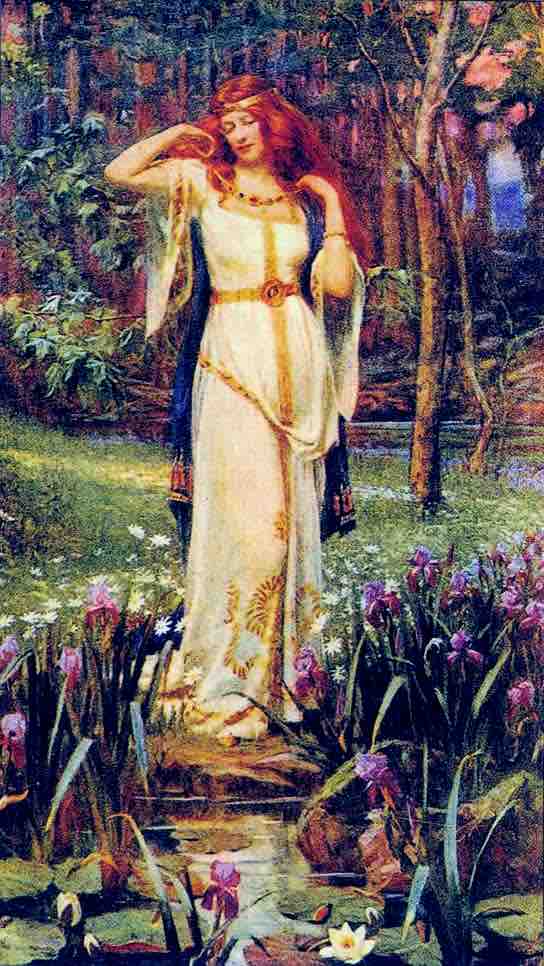
Her beauty was such that it was said that she could make even rocks weep with joy when she passed them by. Not only could no man resist her charms, but those who tried to were also said to be cursed to an eternity of misery.
How many Norse goddesses are there in total?
There are more than 76 Norse goddesses mentioned in the Eddas, including 17 Ásynjur (female equivalents of the Æsir, i.e. gods like Odin and Thor), at least one female Vænir (Freyja), 26 Gýgr (female equivalents of Jötnar, the giants of the Norse world), at least 18 Dísir (9 bright and 9 dark), at least 11 Valkyries (who carried slain warriors from the battlefield to Valhalla and Folkvang), at least three Norns (who shaped the fates of humans), and an unknown quantity of Fylgjor (protective spirits for prominent families) and Hamingja (another spirit that brought luck to prominent families).
Are Freyja and Aphrodite ultimately the same deity?
Freyja and Aphrodite may share many similarities—as beautiful blond-haired goddesses of love, beauty, and fertility—but Freyja is also a goddess associated with war, death, future-telling, and magic, while Aphrodite shares none of these associations.
Digging deeper, the Norse Freya is often depicted as wearing a cloak of falcon feathers and accompanied by cats or boars, while the Greek Aphrodite is said to wear a golden crown, necklace and earrings, and a delicate gown.
Sources:
https://books.google.com/books/about/Edda_de_Snorri.html?id=RD5cAAAAMAAJ
https://www.gutenberg.org/files/598/598-h/598-h.htm
https://books.google.com/books/about/Gautreks_saga.html?id=ta3SmAEACAAJ
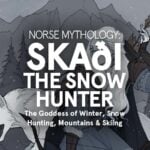 Skaði: Norse Goddess of Winter, Mountains & Hunting
Skaði: Norse Goddess of Winter, Mountains & Hunting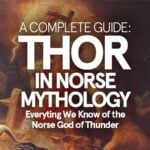 Thor in Norse Mythology: A Historical Guide to the God of Thunder
Thor in Norse Mythology: A Historical Guide to the God of Thunder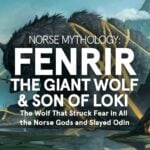 Fenrir: The Giant Wolf Who Slayed Odin in Norse Mythology
Fenrir: The Giant Wolf Who Slayed Odin in Norse Mythology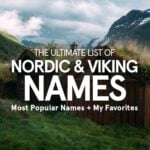 Viking, Norse, Scandinavian & Nordic Names: The Ultimate List
Viking, Norse, Scandinavian & Nordic Names: The Ultimate List

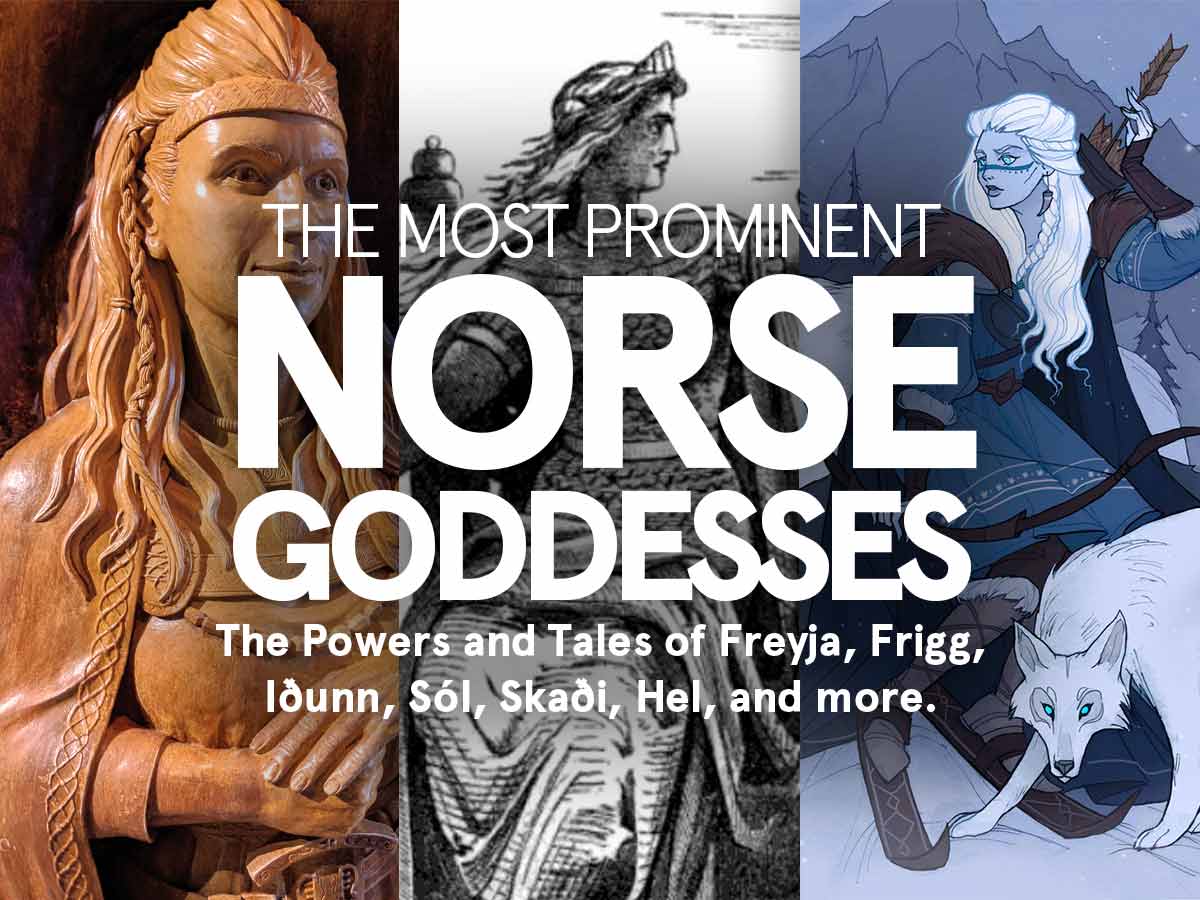

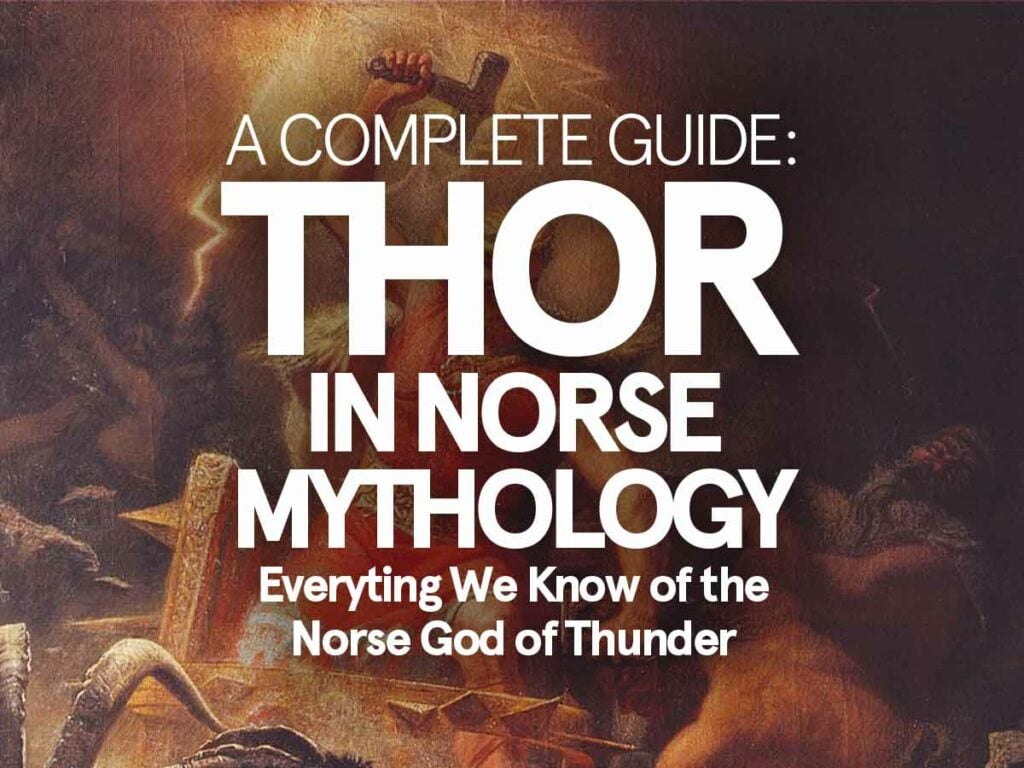

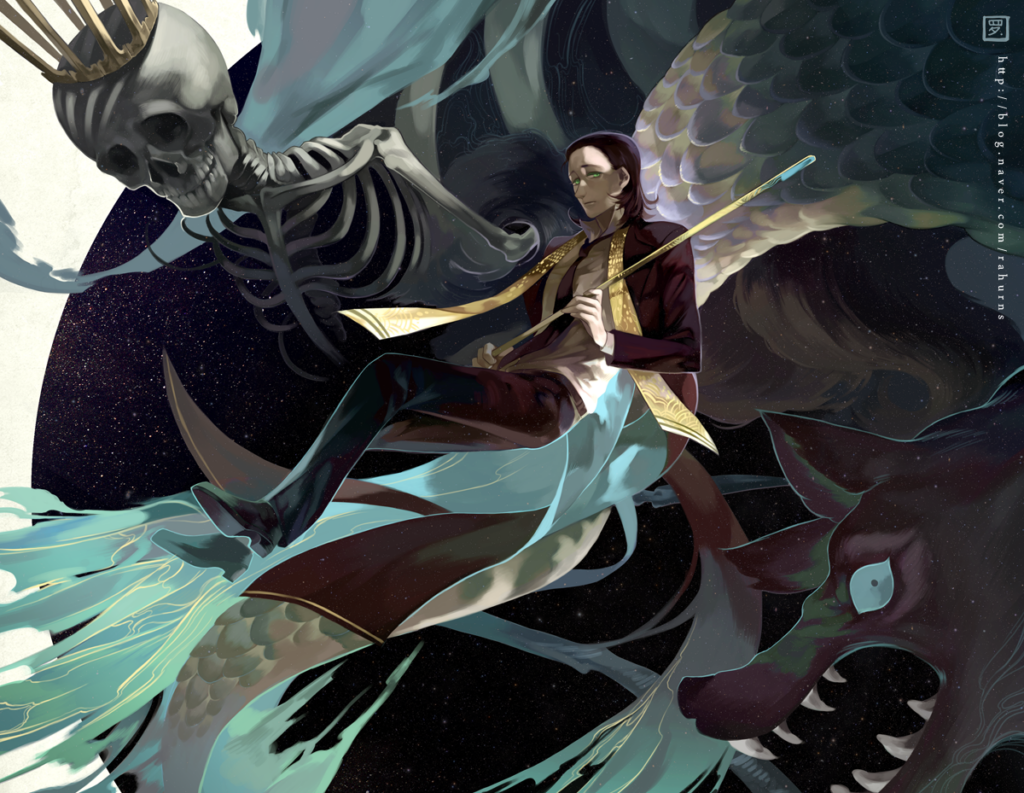
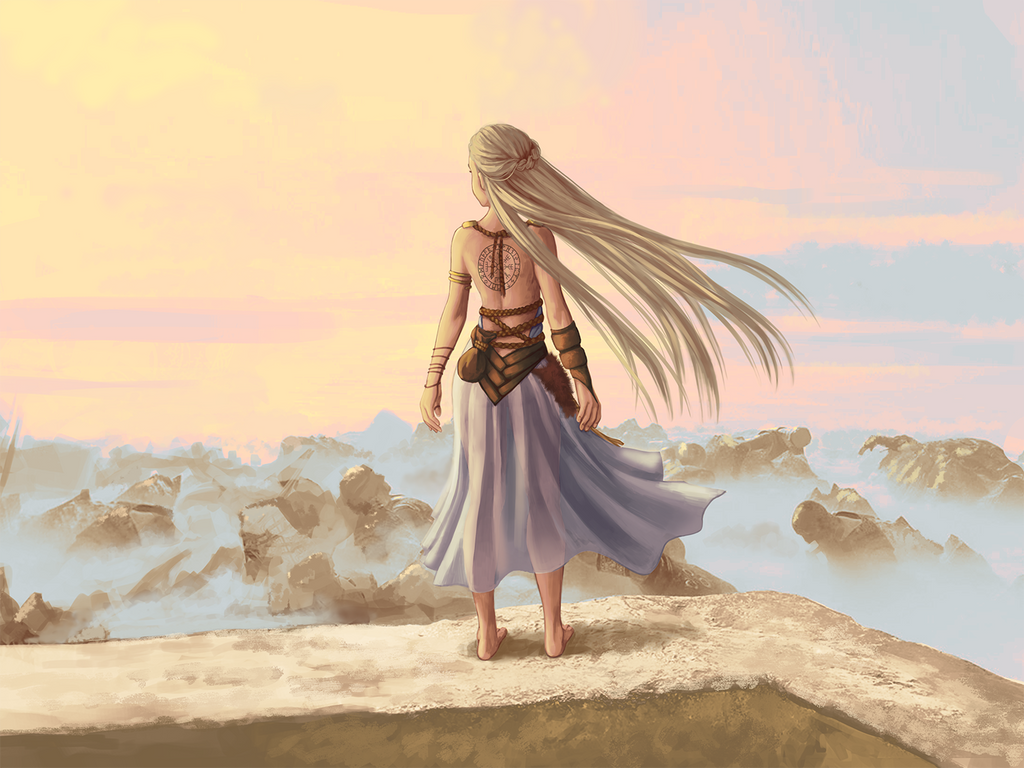

Thank you. I wanted to know about females in Norse mythology and this was exactly what I wanted.! Great stuff.
Thanks Shardric, much appreciated! 🙂
Karl
Thank you I was only aware of freyja, frigg,hel,iouhh and sif. Thank you very much!
Amazing Content! If you need some details about about Blogging than have a look here Webemail24
Great article, tremendous resource! I’d like to acquire physical representations of all of them, a compilation in a book. I see a lot of references in the pictures, any go to for most/all? How about a source for statues?